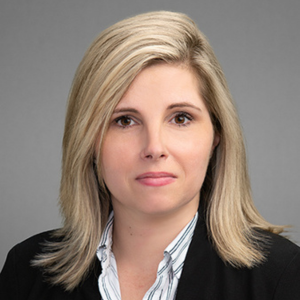Need Capital? Know How Lenders Assess Your Operations
| BY JAMES J. PIECZYNSKI Need capital? Know how lenders assess your operations You’re sure you qualify-but how do you convince lenders of that? |
| With the population aging and the economy steadily improving, the outlook for the senior housing sector appears to be the brightest since the mid-1990s. In fact, owner/operators who have streamlined operations out of necessity are now well-positioned for strategic growth. Although a surge in new construction is unlikely, acquisition activity will pick up, and new entrants may aggressively pursue consolidation strategies in selective markets. However the scenarios play out, though, one thing is certain: The senior housing sector will need more capital. Not only will more properties change hands, but many operators will require refinancing because the 10-year mortgages so prevalent in the mid-1990s are about to mature. Fortunately, capital markets are showing increased confidence in the entire senior housing and care industry. Capitalization rates for assisted living facilities are dropping below 10%-an indication that both operators and debt providers are recognizing sustainable profit potential for high-performing properties. Also having a positive impact are the Medicare rate adjustments of last October that increased reimbursement by more than 6%. What should operators who believe they are qualified do to get the capital they need at the most favorable rates and terms? They should start thinking like lenders-understand what they value and make certain the facility meets their most stringent criteria for creditworthiness. Below are some of the key factors CapitalSource considers as part of its evaluation process. The Intangibles: Reputation, Hands-On Management Philosophy As in any small business, the top managers need to be intimately involved in all aspects of day-to-day operations. In this business, the administrator (or program director) should have command of detailed information on the payer mix, census trends, local market occupancy rates, competitors’ strategies, and other developments likely to have a significant impact on revenues and profitability. For nursing homes, the director of nursing (DON) should be up to speed on key clinical performance measures (e.g., pressure sores, fall incidents, restraints, etc.) and have a well-defined strategy on how to achieve better resident outcomes. This plan should address the principles and processes of the Minimum Data Set (MDS) and quality monitoring by surveyors and consumers. On-Site Inspections For nursing homes, an on-site inspection enables lenders to assess the size and quality of the therapy room-important considerations, given that therapy services are the key to maintaining a stable and profitable Medicare census. For all facilities, lenders will also confirm whether the building has an adequate sprinkler system, which has become an absolutely essential precaution in the wake of several well-publicized nursing home fires. Lastly, a site visit gives lenders a real-world view of operations that helps to answer fundamental questions concerning the management team. For example, do top personnel and their staff have good rapport with other employees and the residents? Do they know them by name? Are they respected and well-liked? How much time do they spend in their offices versus “walking around”? In the nursing home and assisted living business, management-by-walking-around often goes a long way toward creating a successful operation. Market Factors Community demographics will also affect a facility’s ability to attract and retain sufficient numbers of residents. The National Investment Center for the Seniors Housing & Care Industries (NIC) provides useful benchmark data to help determine a property’s variance from local and national norms on such factors as geographic distribution, net worth, education levels, and general health and disability assessments. State Surveys Cash Flow, Reimbursement Issues |
|
| Beyond the balance sheet and income statement, lenders will pay particularly close attention to any external developments that might affect reimbursement. With Medicaid accounting for roughly two-thirds of a nursing home’s revenues, the state’s reimbursement environment is evaluated in terms of relative pay scales, the likelihood of cutbacks, and legislative/political developments, especially in election years (like this one). For assisted living facilities, lenders will focus on the private-pay rates that the competition is charging to get an indication of whether the facility’s revenues are likely to increase or come under pressure. On the other side of the ledger, an excessive number of litigation cases against an operator can adversely affect stability. Lawsuits not only influence the views of state regulators but, if made public, can greatly damage a property’s reputation and diminish its customer base. Lenders also must take into consideration the fact that some states (mostly in the South or Southwest) have proportionally higher numbers of successful lawsuits than other regions in the country. Know Your Financing Options To take advantage of today’s improving conditions, operators should be aware not only of how lenders evaluate their creditworthiness, but also of the available financing options. For example, an entrepreneur interested in an acquisition strategy might consider a short-term (three to five years) variable-rate bridge loan. When the loan matures, he can either cash in the profits from selling the business or obtain permanent debt financing (for example, 10-year loans with Fannie Mae and Freddie Mac and 30- to 35-year loans from HUD) at relatively low interest rates. As the boom/bust cycle sparked by the overbuilding of assisted living facilities in the mid-1990s nears the end of its course, many experts believe the assisted living sector is already in the early stages of a strong, sustainable recovery. Operators who seek capital will be well-served by gaining a better understanding of how lenders determine value and by knowing their financing options. Any operator who can align his operations to meet these criteria will be well-positioned to succeed when the market expands. |
| James Pieczynski is Director of Real Estate for the Healthcare Finance group of CapitalSource Finance LLC, a specialized commercial finance company offering asset-based, senior housing, cash flow, and mezzanine financing to small- and mid-sized borrowers. For further information, phone (818) 540-2102, e-mail jpieczynski@capitalsource.com, or visit www.capitalsource.com. To comment on this article, send e-mail to pieczynski0604@nursinghomesmagazine.com. For reprints in quantities of 100 or more, call (866) 377-6454. |
I Advance Senior Care is the industry-leading source for practical, in-depth, business-building, and resident care information for owners, executives, administrators, and directors of nursing at assisted living communities, skilled nursing facilities, post-acute facilities, and continuing care retirement communities. The I Advance Senior Care editorial team and industry experts provide market analysis, strategic direction, policy commentary, clinical best-practices, business management, and technology breakthroughs.
I Advance Senior Care is part of the Institute for the Advancement of Senior Care and published by Plain-English Health Care.
Related Articles
Topics: Articles , Finance , Housing











